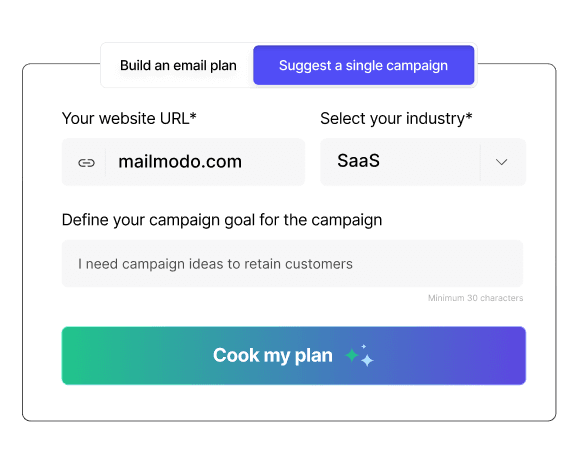What is AI email personalization?
AI email personalization means using artificial intelligence (AI) to customize email content, subject lines, and messaging based on what each person likes and how they behave. It helps make emails more interesting and likely to be read and responded to.
Marketing Alchemist, Najmah Salam, talks about using AI as her email marketing co-pilot in this episode of The AI Marketing Show.
Here's an example. I received this email just a day after posting about our people-centric work culture on LinkedIn. It is basically a cold outreach email that references my LinkedIn post.
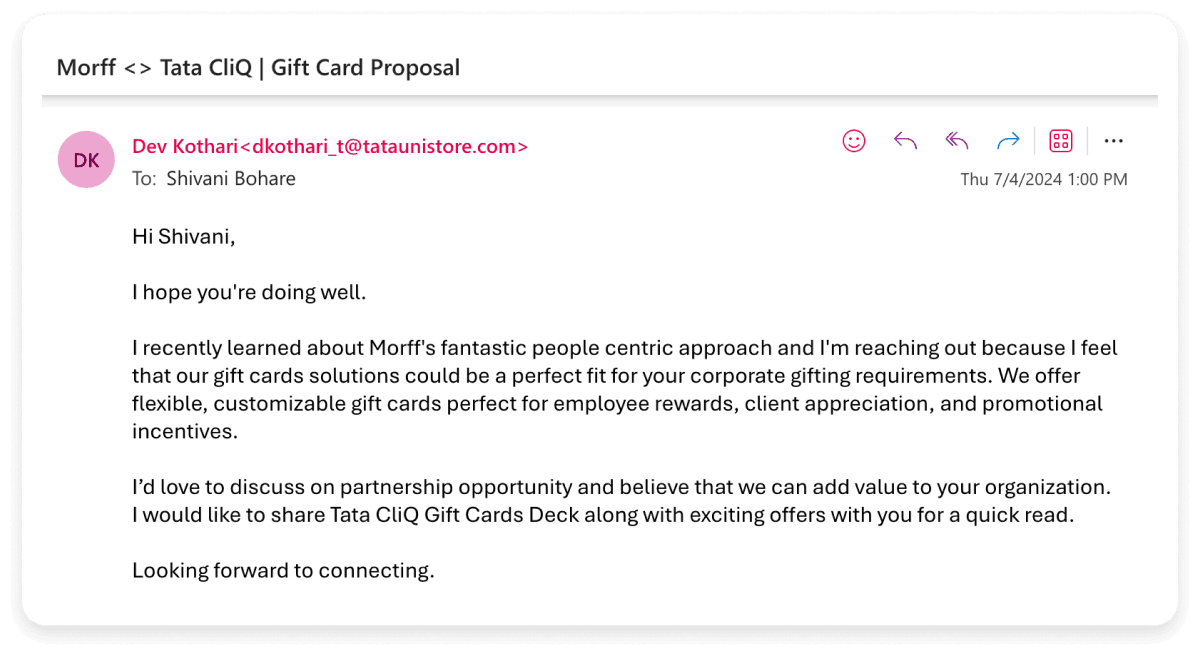
If you want to learn about learn about using AI in your email marketing strategy, you can read about it in our detailed guide here.
💡 Related guide: How to Leverage AI in Email Marketing For Better Campaigns
How is AI email personalization different from traditional personalization?
Traditional email personalization relies on basic segmentation and predefined rules. It typically involves inserting a recipient's name or referencing their past interactions with your brand. While effective to a certain extent, this approach lacks the depth and customization that AI personalization can offer.
AI email personalization, on the other hand, goes beyond simple segmentation. Here are a few ways AI email personalization rules over manual personalization:
| Aspect |
Traditional email personalization |
AI-driven email personalization |
| Data analysis |
Relies on basic segmentation and predefined rules |
Analyzes extensive real-time data using ML algorithms |
| Customization |
Limited to inserting names or basic preferences |
Provides deep customization based on the recipient’s website, LinkedIn profile, and other social activity |
| Scale |
One at a time manual approach |
Personalization at scale |
| Real-time adaptability |
Limited by static data |
Adapts dynamically based on current behavior |
| Predictive analytics |
Limited to historical customer data |
Uses predictive analytics to predict future behaviors |
5 ideas to use AI personalization in emails
AI-powered email personalization can transform how you engage with your audience. Let's explore some practical use cases that you can implement in your emails:
1. Cold email personalization
With a significant 72% of consumers exclusively engaging with personalized messaging, no wonder this is the most common way to use AI for email personalization.
You can use AI to transform your cold outreach into warm conversations by personalizing your emails based on recipient profiles and preferences. AI tools can write icebreakers, intros, subject lines and even email copies for your cold email campaigns.
Suppose you're reaching out to potential clients for the first time. With AI, you can customize your email based on your industry, interests, and even recent social media activity.
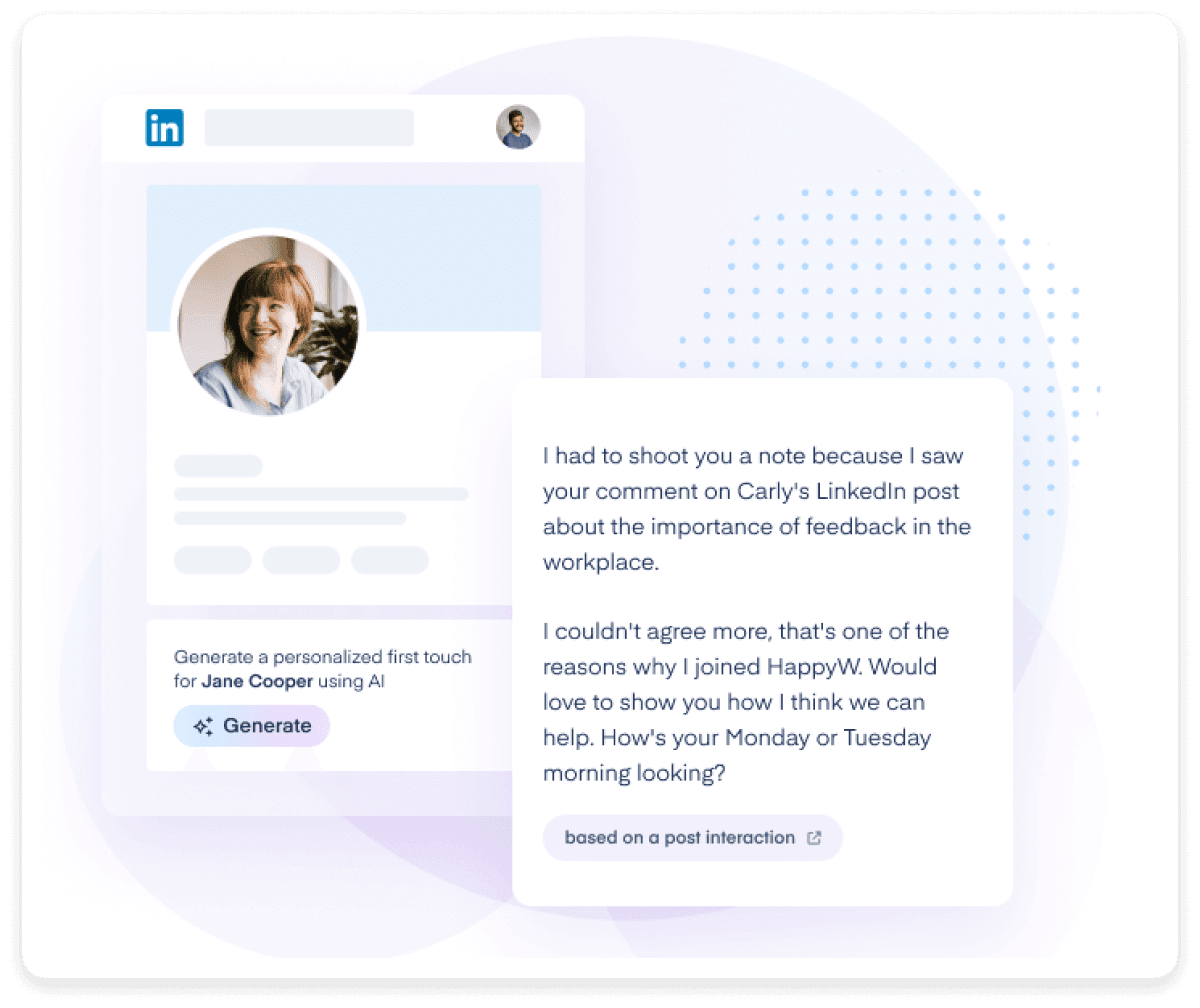
2. Psychographic personalization for ecommerce
Psychographic traits are psychological characteristics, interests, and values that influence consumer behavior. This is different from demographics, which focus on basic details like age or gender.

In ecommerce, AI uses psychographic traits to recommend products. For example, if someone often buys eco-friendly items, AI can note that and personalize their experience, for instance, by suggesting more sustainable products they might like. This personalization helps businesses connect better with customers based on what really matters to them, improving the shopping experience and boosting loyalty.
3. Email copy optimization
Your email campaigns can benefit from AI's ability to test and optimize email copies in real-time. AI can analyze which email copy (and not just the subject line) leads to higher open rates and adjust them accordingly. This ensures that each recipient receives messages that are highly relevant and likely to engage them.
Instead of guessing, you might find that a more specific subject line like "Discover Our Summer Collection Essentials" performs better than a generic "Check Out Our Latest Products."
4. Personalized behavioral trigger emails
You can use AI to identify and send personalized emails triggered by specific user behaviors, such as abandoned carts, website visits, or content interactions. While you can do this manually too, AI can automate and personalize these emails at scale.
AI analyzes vast amounts of data quickly to identify behavioral triggers, such as abandoned carts or website visits and then generates personalized messages accordingly. This automation saves time and ensures timely responses, while strong application security measures help protect the sensitive behavioral data driving these campaigns.
5. Dynamic predictive product recommendations
AI algorithms can analyze customer preferences, purchase history, and browsing behavior to predict and recommend products or services that are highly relevant to each recipient.
Suppose a customer frequently buys outdoor gear from your store. AI can analyze their buying patterns and recommend new arrivals or complementary products, such as hiking boots or camping gear.
Here’s how AI leverages categories, sizes, discounts, and even style affinity to predict the products your customers are most likely to purchase.
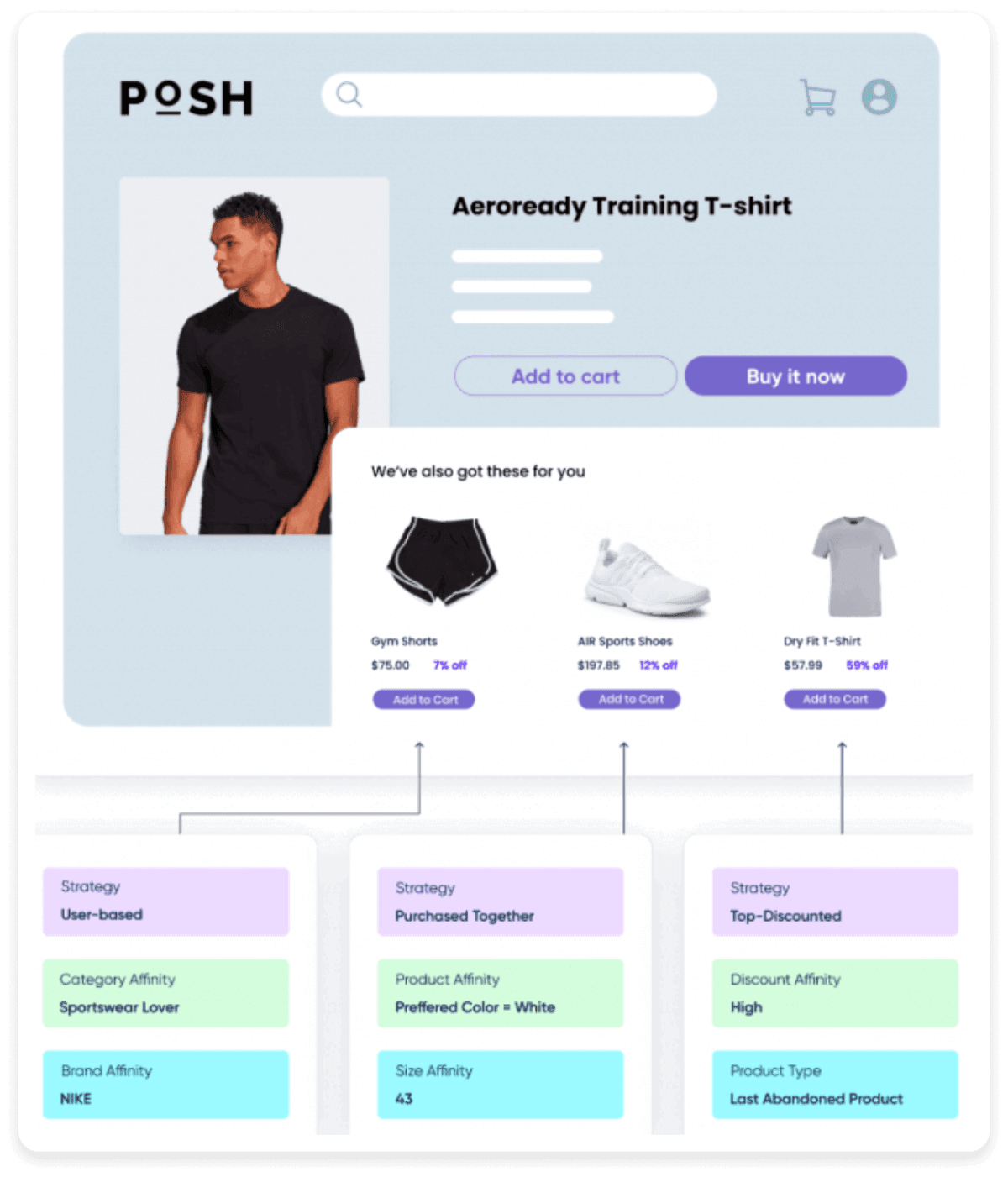
There are many tools claiming to offer AI-driven email personalization, but not all deliver on their promises. Here's a curated list of reliable tools that can truly enhance your email personalization efforts using AI:
1. Warmer.ai
Best for in-depth personalization and customization.
Warmer.ai enables users to customize emails extensively, incorporating specific details about the recipient's company, interests, and goals for effective communication.
This is the output Warmer.ai generated when prompted to write an email asking Gary Vaynerchuk for a meeting.
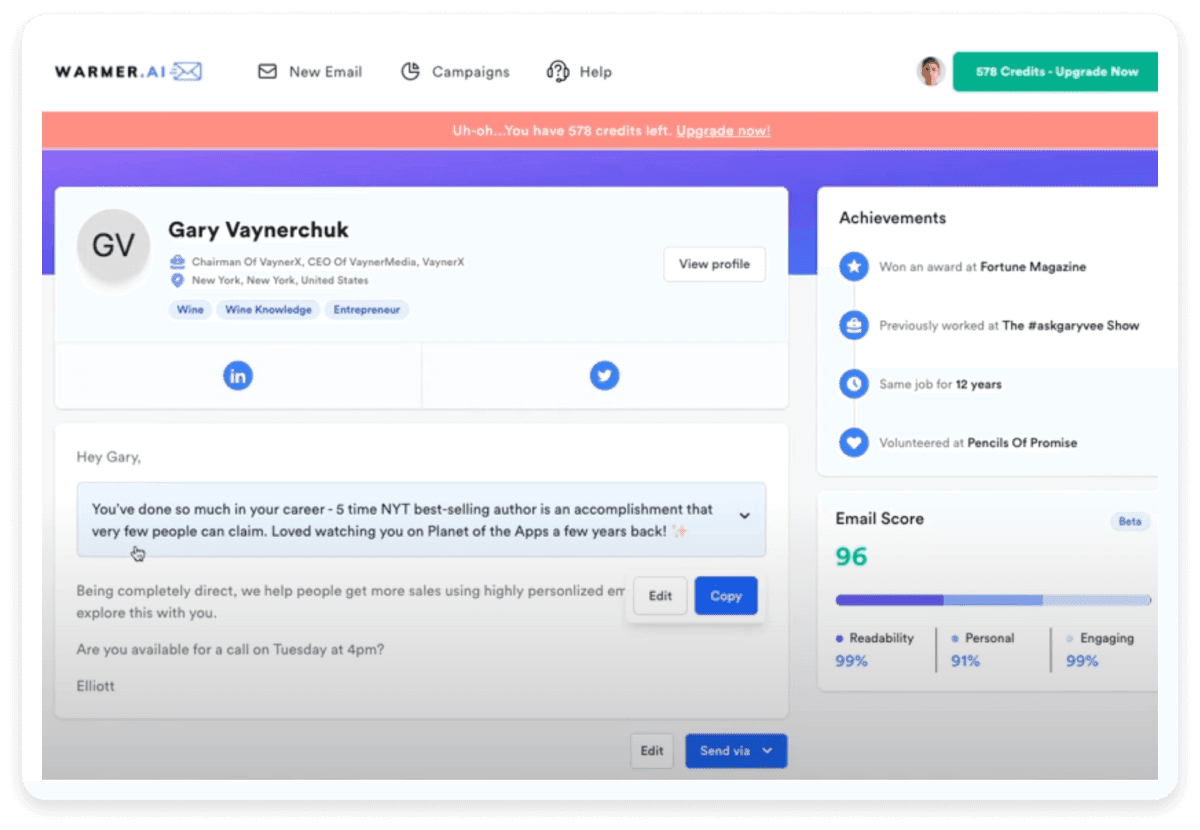
Key features:
- Customizable email templates based on LinkedIn or website.
- Choose from 4 personalization goals: Book a meeting, Click a link, Ask a question, or Gauge interest.
- Integration with Mailshake for seamless campaign management.
- AI-generated email examples for inspiration and efficiency.
Pros:
- User-friendly interface for easy customization and management.
- Provides actionable tips to optimize email performance.
- Supports CSV export for efficient data handling.
Cons:
- AI-generated content may feel less human at times.
- Higher pricing compared to some alternatives.
- Requires initial setup and familiarization.
Pricing:
| Plan |
Pricing |
| Starter |
$59/month (150 credits/month) |
| Basic |
$97/month (325 credits/month) |
| Plus |
$279/month (1500 credits/month) |
2. Smartwriter.ai
Best for creating personalized cold emails that resonate with recipients.
Smartwriter.ai enables users to craft tailored emails by leveraging four types of personalization options: social activity, professional recommendations, achievements, and bio/job descriptions.
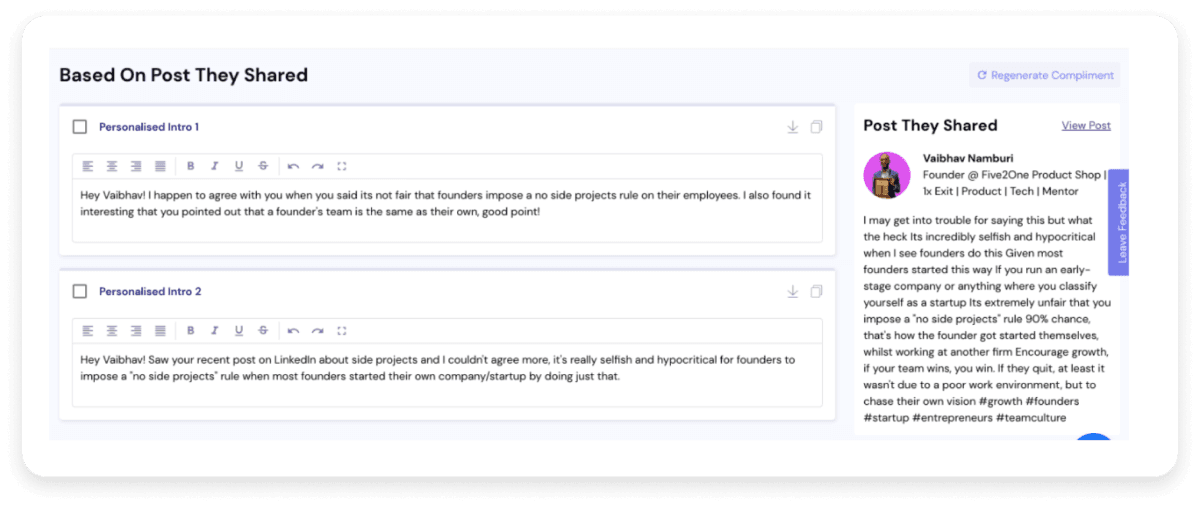
Key features:
- Personalization based on prospects' recent online activities.
- Automated complimenting of prospects' social posts using AI.
- Integration with CRM systems for seamless campaign management.
- Chrome extension for on-the-fly email generation and lead management.
Pros:
- Generates personalized emails for entire campaigns, including follow-ups.
- Finds and connects with leads across various social platforms.
- Supports automated scheduling of personalized outreach messages.
- Features auto-syncing with Google Sheets for lead management.
Cons:
- Content accuracy and relevance may vary across different niches.
- Requires occasional editing or proofreading for tone and quality assurance.
- The pricing structure may be a barrier for some users or businesses.
- Limited integrations and English-only capabilities.
Pricing:
| Plan |
Pricing |
| Basic |
$59/month (400 credits/month) |
| Popular |
$149/month (1200 credits/month) |
| Pro |
$359/month (3500 credits/month) |
3. Lavender.ai
Best for creating personalized cold emails manually fast with AI guidance.
Lavender AI acts as a virtual assistant, helping businesses and sales teams save time by automating personalized email communications. It integrates sophisticated Natural Language Processing (NLP) algorithms to optimize email content and improve engagement.

Key features:
- Personalized email creation based on prospect data (work history, personality) and behaviors (socials, tech stack).
- Integration with popular CRMs like Salesforce and automation tools for seamless campaign management.
- Real-time feedback and suggestions for email content, tone, and readability.
- Mobile optimization and spam detection to enhance email deliverability.
Pros:
- Enhances email personalization with detailed prospect insights.
- Provides actionable insights through advanced analytics and A/B testing.
- User-friendly interface with a browser extension for real-time email scoring.
- Supports major email platforms like Gmail, Outlook, and HubSpot.
- All integrations are available during the free trial period.
Cons:
- Free version is limited with premium features behind a paywall.
- May not cater well to email platforms outside of its primary integrations.
- Requires internet connectivity for real-time analytics and feedback.
- Some users may find the interface occasionally slow.
Pricing:
| Plan |
Pricing |
| Basic |
$0/month (5 emails/month) |
| Starter |
$27/month (Unlimited emails) |
| Individual pro |
$45/month (Unlimited emails) |
| Team plan |
$8500/month (Unlimited emails) |
4. UniqMail
Best for automating and personalizing cold email outreach effectively.
UniqMail leverages AI to transform generic outreach into engaging conversations, ensuring each email stands out. The platform integrates seamlessly with your API keys and provides an intuitive user interface.
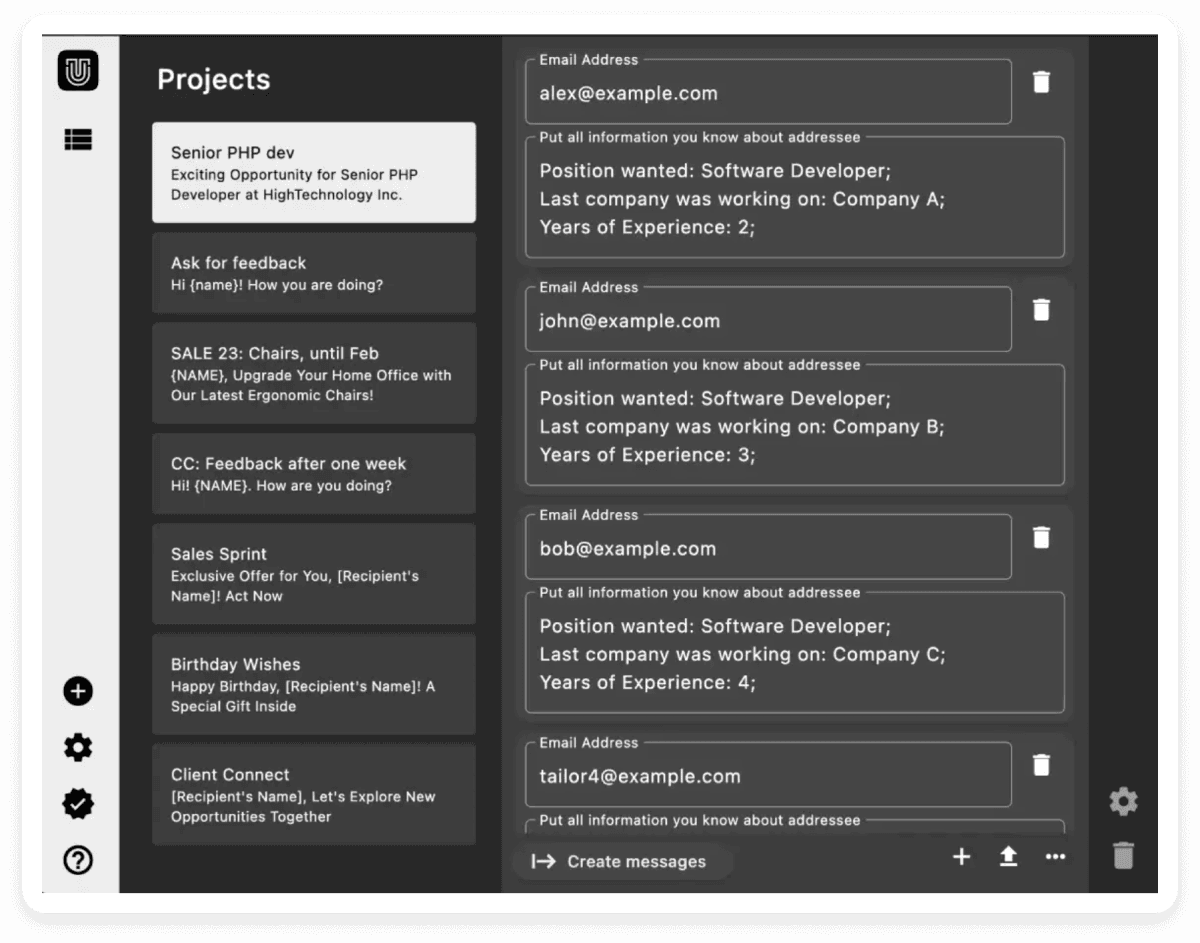
Key features:
- Ability to create projects based on persona and campaign type.
- Easy integration with API keys for seamless operation.
- Tools for creating, sending, and managing personalized email campaigns.
Pros:
- Significantly improves email engagement with personalized content.
- It's a free tool.
- User-friendly interface that caters to all skill levels.
- Flexible integration with existing systems and tools.
Cons:
- New users may need time to familiarize themselves with the platform.
- You have to manually add information about your contacts.
- Some users might find customization options limited for specific needs.
Pricing:
Free
5. Autobound
Best for streamlining sales workflows and personalizing outreach across multiple platforms.
Autobound elevates your email workflow within sales tools like Salesloft, Outreach, and LinkedIn by providing a Chrome extension to personalize interactions easily.
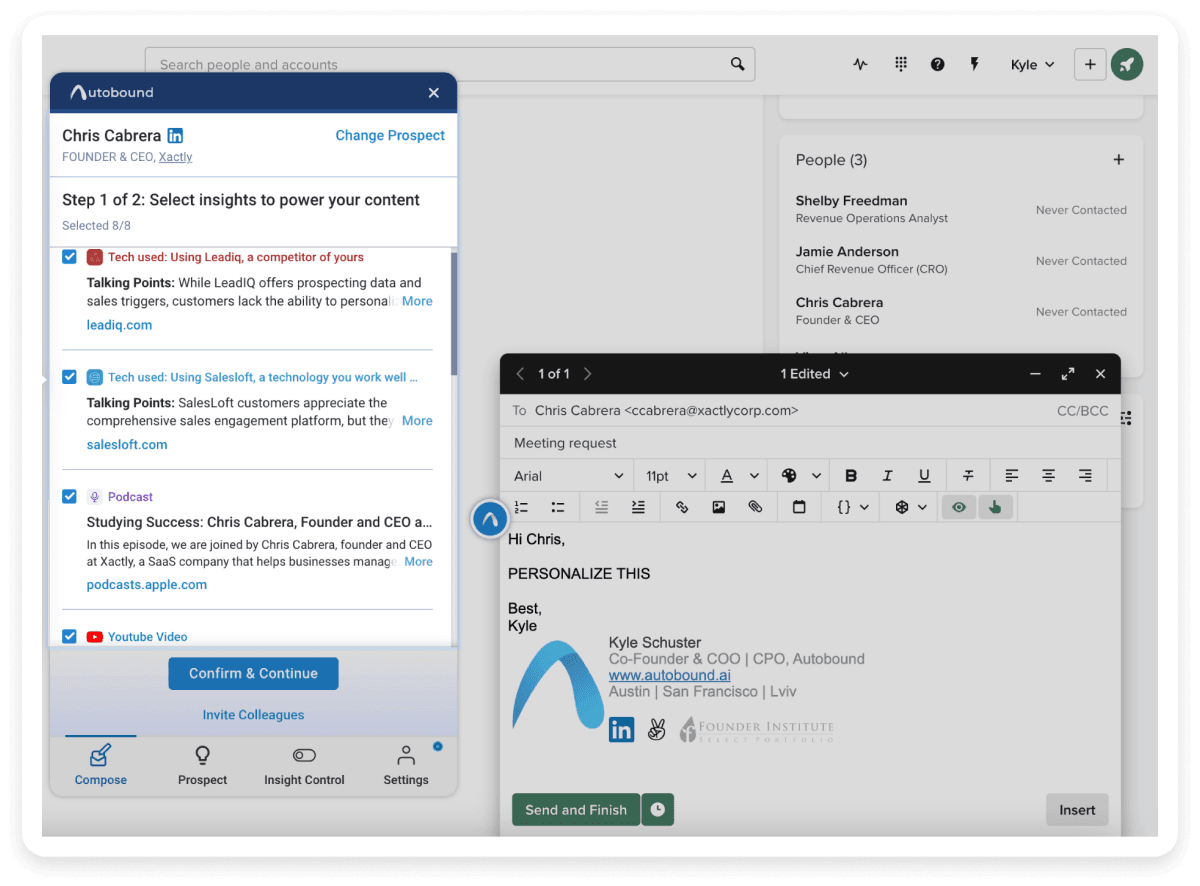
Key features:
- AI-powered email sequencing to generate entire email sequences.
- “1-Click to Personalize” button for effortless personalized emails.
- Integration with major sales tools like Salesloft, Outreach, and LinkedIn.
- Learns your voice and buyer personas to tailor messages effectively.
Pros:
- Simplifies the personalization process with AI-driven insights.
- Quick message generation with options to cycle through different versions.
- Seamless integration with popular sales and marketing tools.
- Provides analytics to track the effectiveness of your messages.
Cons:
- Website usability issues, especially with browsers other than Chrome.
- Misleading promises about API access and other features.
- Slow output speed and inconsistent output quality.
- Limited input data options for personalization.
Pricing:
| Plan |
Pricing Details |
| Free |
$0/month (250 credits/month) |
| Pro |
$39/month (1000 credits/month) |
| Team |
$89/month (2000 credits/month) |
The AI email personalization tool you choose can significantly impact your marketing success. Here’s a guide to help you make an informed decision:
1. Identify your needs
To choose the right tool, pinpoint your company's specific needs, which may vary from the tool's use case.
Campaign goals: Determine whether you need the tool for cold outreach, follow-ups, or comprehensive email sequences.
Target audience: Consider the type of audience you are targeting—professionals, customers, or niche markets.
Try to understand the features offered by different tools to find the best fit for your personalization needs.
Personalization capabilities: Look for tools that offer various personalization options, such as social activity, professional recommendations, and achievements.
Ease of use: Choose a tool with a user-friendly interface and intuitive design, minimizing the learning curve for your team.
You should compare pricing plans of tools you’re considering to ensure that the one you choose fits your budget and provides value for money.
Budget: Compare the pricing plans and see which tool sits well with your marketing budget. Some tools offer free trials or basic free versions, which can be a good starting point.
Value for money: Evaluate whether the features and benefits provided justify the cost. Look at the cost per lead or email if applicable.
4. Check integration and compatibility
You should ensure the tool integrates seamlessly with your CRM and email platforms.
CRM integration: Make sure the tool integrates seamlessly with the CRM you use or plan to use and other marketing tools that your team works with.
Platform compatibility: Verify if the tool works well with the email platforms you use, such as Gmail, Outlook, HubSpot, or Salesloft.
5. Read reviews and get feedback
You should gather insights from user reviews and use free trials to assess tool performance before committing.
User reviews: Look for reviews on G2 and Appsum and testimonials from other users in your industry to learn about their experiences.
Free trial: Take advantage of free trials to test the tool’s features and usability before committing.
Create campaign ideas with
AI Email Campaign Planner
The future of email personalization is here, powered by AI
AI-powered tools for personalization are no longer just a competitive advantage—it's a necessity. Each tool discussed in this guide has its strengths and potential weaknesses, hence the necessity to determine which fits into your specific requirements and workflow. Integrating these AI email personalization tools within your marketing strategy may just be what you need to drive engagement, better open and response rates, and, ultimately, success in your outreach campaigns.
You can also subscribe to our newsletter and we’ll send you the latest trends in the world of email marketing.











